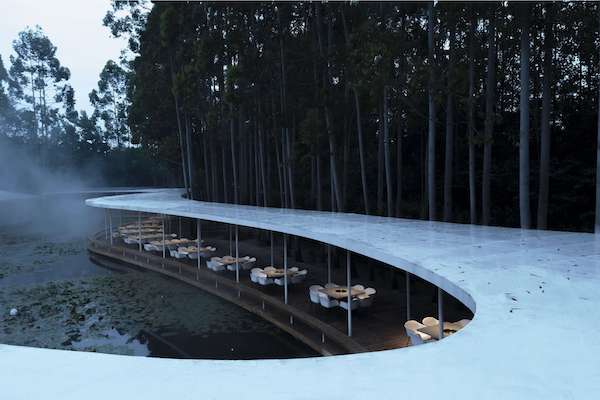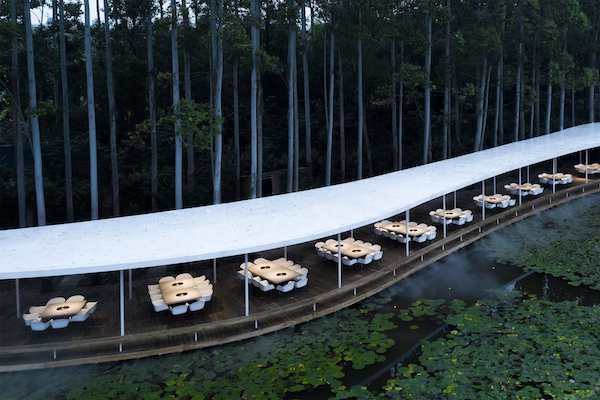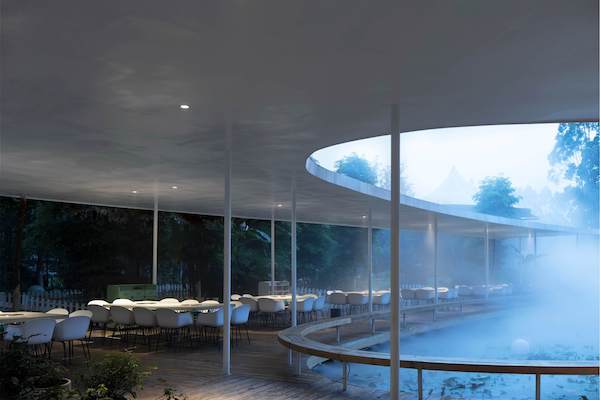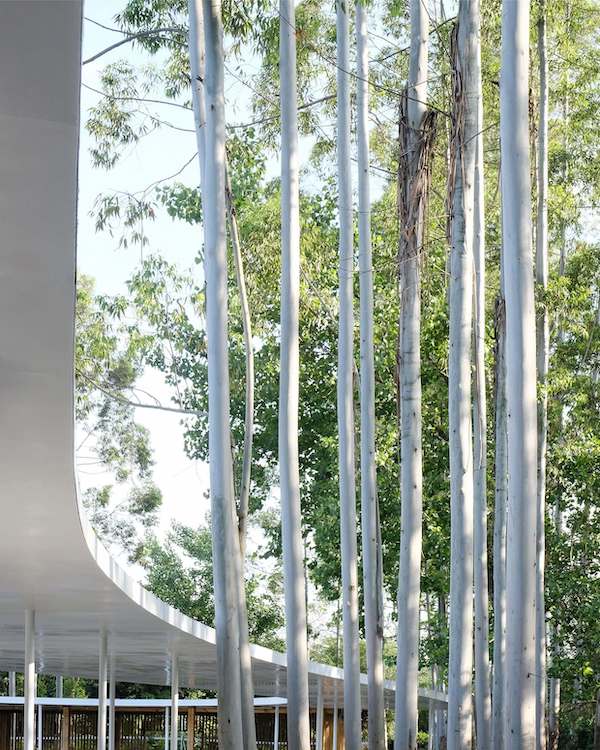MUDA Architects designed Garden Hotpot Restaurant in Chengdu, China
MUDA Architects designed a garden hotpot restaurant in Chengdu China. Mr. Lu Yun found MUDA-Architects in March 2015 in Boston and has participated in many large-scale projects and has established a solid project experience.
Garden Hotpot Restaurant is in the hinterland of Sansheng Township, surrounding a lotus pond, hidden in a eucalyptus forest. On the premise of paying the greatest respect to the natural environment, MUDA decided to eliminate the architectural scale, leaving out walls, only using pillars and boards to lightly hide the building in the woods, letting the building gently integrate with the site and delineating the shape of the lake in a light and peaceful way.

The construction formed along the lake, looking like the steams and smokes from the boiling pots curling between the pillars and trees. Thin columns are evenly distributed on both sides, and the free curve of the roof forms several transparent viewing frames so that different views can be appreciated during the whole process of walking. The bottom platform is consistent with the curve of the roof, and the same method is used in the design to echo each other, demonstrating the consistency and integrity of the whole space.

In total, the building has a circumference of 290 meters, with a height of 3 meters, and the width varies with the natural environment. The platform is made of anti-corrosive wood, and the roof is made of galvanized steel sheet, coated with white fluorocarbon paint, which complements the surrounding lush environment. A series of steel columns with a diameter of 88 mm is used as the supporting structure, and it blends into the straight trunks of eucalyptus trees and disappears into nature. The curved wooden railing by the lakeside is built for customers to enjoy the views, and blur the boundary of the lake, which brings people closer to nature.

The natural environment of the site is beautiful but complex. Tens of eucalyptus trees must be preserved, and the terrain is tortuous with a maximum drop of nearly 2 meters. In order to respect the natural environment and minimize human intervention in this natural site, MUDA conducted manual mapping and recorded the site in person, and the building was designed according to the location of eucalyptus trees and lake. Moreover, the free curve of the roof is designed according to the site characteristics and function. The whole building applied steel structure welding technology, which greatly shortens the construction period and reduces the cost.

The first phase completed in April is open to the public, which is highly integrated with nature. The building is light and transparent. Users sit around the lake, and the landscape spray permeates the whole space, starting a romantic and wonderful ecological hotpot tour.
Contact Details: www.muda-architects.com
(This article was originally published in The Tiles Of India Sep-Oct 2019 issue)




GIPHY App Key not set. Please check settings